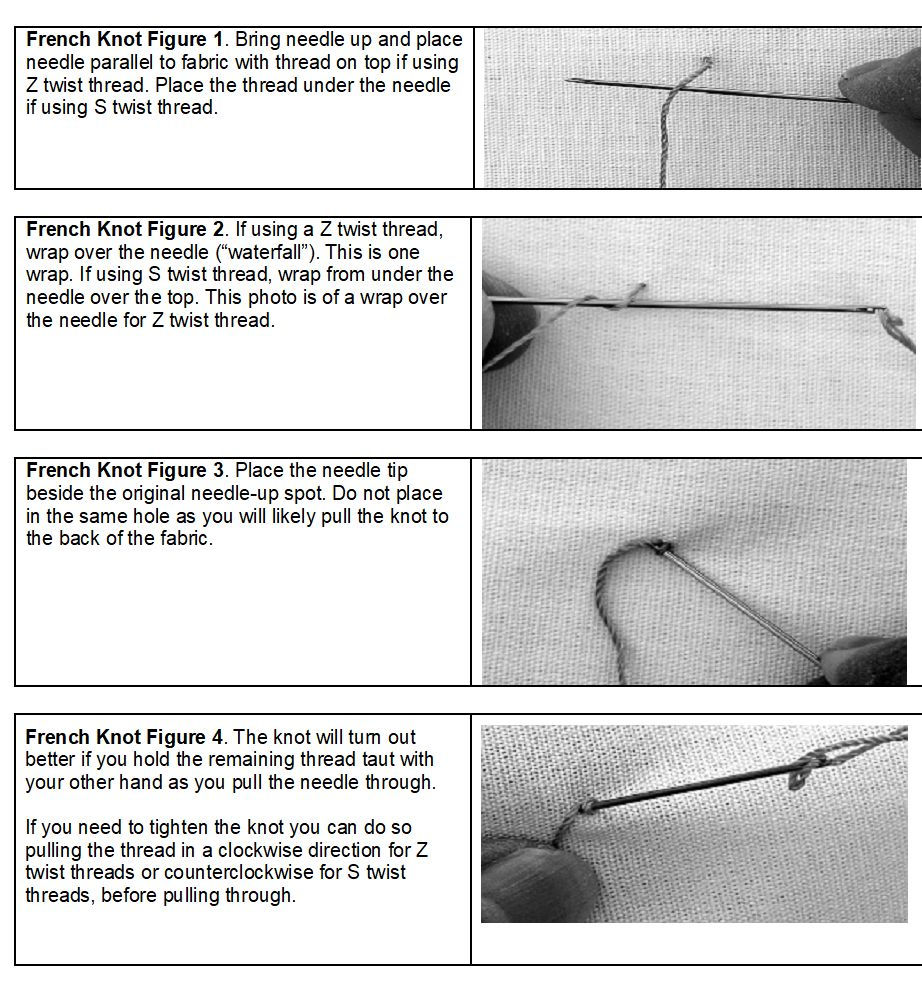Stem and Outline Stitch - which is which and how to do
- jborresoncaruso
- Jan 13, 2021
- 2 min read
Updated: Jan 21, 2021
Different threads are manufactured differently. Often, threads with "S" twist, such as cotton floss and pearl cottons, are stitched one way and threads with "Z" twist, such as the rayon threads used in Brazilian Dimensional Embroidery are stitched another way.
To stitch a Stem Stitch with "S" twist thread, the thread is carried below the line and with "Z" twist thread, the thread is carried above the line. For Outline Stitch, these thread positions are reversed. Here is a photo of the Stem Stitch stitched with "Z" twist rayon thread.

How to stitch a Stem Stitch:
Stem/Outline Stitch Figure 1. Hide knot in stem.

Stem/Outline Stitch Figure 2. Come up at bottom of stem - Point A. If you are right handed, you will work from left to right. If you are left-handed, you will work from right to left.

Stem/Outline Stitch Figure 3. Insert needle about ⅛ to 3/8 inch away and scoop back to the bottom of the stem. (Point B to Point A).
If you carry the thread over the top of the fabric line, this is the Stem Stitch for Z twist threads and Outline Stitch for S twist threads. Pull through. Go down the stem another ⅛ to 3/8 inch distance and scoop to the previous stitch position (Point B) on the stem. Pull through and continue up the stem. Bring thread to back at end of stem.
If you carry the thread below the line, it is the Outline Stitch for Z twist threads and Stem Stitch for S twist threads.

Why don't my Stem Stitches look alike?
All plant stems should be stitched from the base to the leaf/flower.
All side stems should be stitched from the base stem to the outer tip.
If you stitch one Stem Stitch from left to right and you want another to look like it, it must also be stitched from left to right. If you want Stem Stitches on the left side of the main stem, you can turn the fabric around and stitch left-to-right for the next Stem Stitch.
Since the twist of the thread is important, make sure that the same thread ends are at the knot/base end. For example, if you place "S" twist thread in your needle and the end that is knotted (the base in the fabric) is the end that is at the skein-cutting end, then the next thread you stitch with should also use the skein-cutting end for the knotted (the base in the fabric) end.
Since the twist of the thread is important, are you stitching with the correct end knotted (the base in the fabric)? With rayon thread, for example, you can tell the correct end to knot by looking at the 2 thread ends and knotting the end that wants to split into multiple threads.
Does this help? Feedback encouraged.

Comments